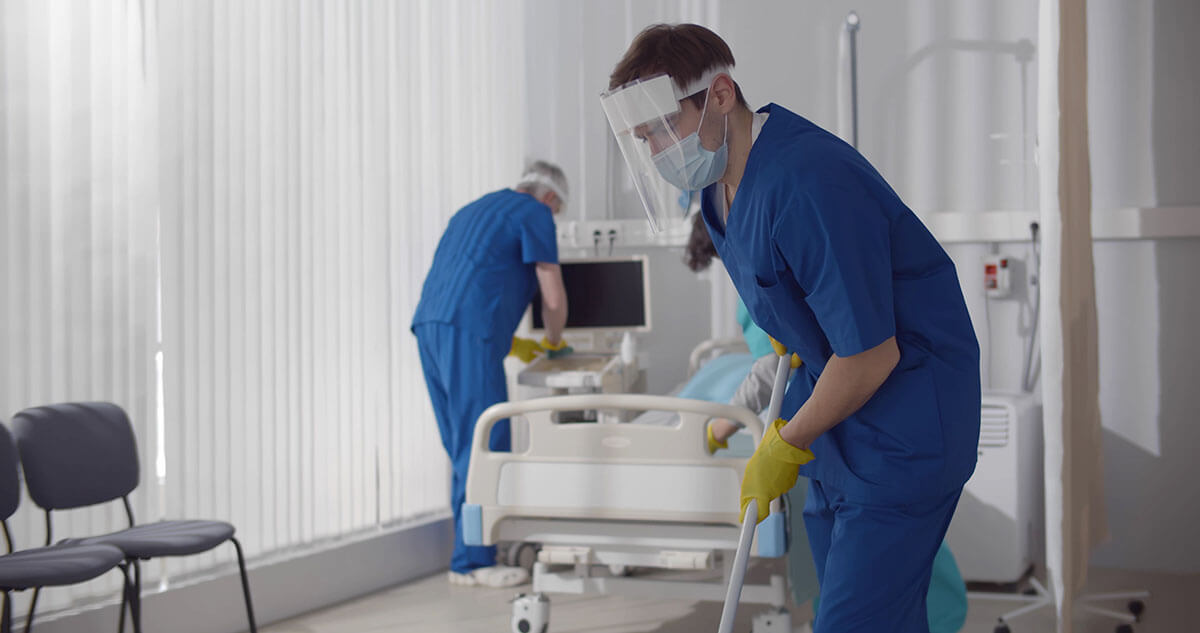Achieving a 5 Star National Standards for Cleanliness Rating
The National Standards for Cleanliness have focused attention on complying with the crucial 50-point check. But are they seizing this opportunity to...
![]() Facilities Management
Facilities Management
Manage maintenance requests & streamline operations
CMMS
CAFM
EHS
Regulatory Compliance
PPM
EAM
Operations Management
Transportation Management
![]() Food Safety
Food Safety
Prove compliance and ensure standards are up to customer expectations
![]() Retail Task Management
Retail Task Management
Enable your teams to focus on delivering quality and achieve their goals.
Task Creation & Automated Follow-up
Unified Reporting and Data Analysis
Regulatory and Audit Monitoring
Full visibility of every task
IoT
Take action on your data to get ahead
Integrations
Bring mpro5 into your other tools
Automated Workflows
Make your work effortless with automated workflows
Managed Service
Supporting your operations, every step of the way
NEWS & INSIGHTS
Blogs & news
NEWS & INSIGHTS
GET IN TOUCH
GET IN TOUCH
2 min read
 Sam Roberts
:
Oct 1, 2021 3:25:09 PM
Sam Roberts
:
Oct 1, 2021 3:25:09 PM
Many believed it wouldn’t happen in their lifetime but the new National Standards of Healthcare Cleanliness are finally here - and only nine years later than promised. Not as long as the film director James Cameron took to make Avatar (15 years if you’re asking) but still quite a wait.
When the previous standards were introduced in 2007 they were meant to be reviewed every five years, which means they should have been reassessed in 2012. Even so, they won’t come into force fully until November 2022.
But they’re here now and, with our heightened awareness of hygiene since the pandemic, are sure to be welcomed by the same people who disinfected their supermarket shop before unpacking it in the early days of COVID-19.
Importantly, the new standards measure not only how often cleaning takes place but also how effective it is. Hospitals are required to publicly display their hygiene rating, much like the hospitality sector’s ‘Scores on the Doors’. The system allows much greater flexibility but is fiendishly complicated. Trusts are required to calculate risk ratings and account for new ‘blended areas’. Armed only with a pen and calculator, this would be a headache. Fortunately, automating the process with intuitive technology makes it a breeze.
Trusts must now undertake a Technical Audit that includes a “50-point check”. This covers elements present in most healthcare environments, from bedpans to fridges, that require regular, thorough cleaning.
“What’s the big deal?” you ask - it’s just one more question than the former 49-point check. Not so fast! Much of the checklist is different from the previous check – it’s not just that one extra question has been added.
Trusts must now allocate a Functional Risk Category to each area. This is a crucial first step in applying the new standards as audit levels are tied to the risk factor. Trusts must produce a written justification for the risk category applied and review the rating at least annually or if there’s a major change in clinical activity.
Cleaning frequency of a given item is determined by the Functional Risk (FR) of the room it is in. It makes sense that an armchair in a high-risk area such as Accident and Emergency needs to be cleaned more frequently than a chair in an admin office. There are six FR categories, with FR1 being the highest risk and FR6 the lowest.
Then there are what’s known as ‘blended areas’ - an area that has rooms with different risk categories. The ability to have “blended areas” means you can assess an entire area or section of a site while still reflecting the varying FR categories of different rooms. This gives you greater flexibility and allows you to allocate resources where they’re needed most.
For example, within one functional risk area, it’s possible to assign different risk categories to individual rooms, each with a different target score. An office or meeting room could be categorised as FR5, a staff room as FR3 and in-patient room as FR2. The cleaning frequency for each individual room will be determined by its risk rating, saving you wasting money on excessive cleaning of a relatively low-risk area.
The target for a blended area will be based on the combined targets for the number of rooms in each functional area. The ultimate star rating will be determined by the combined calculated score for the entire blended area or from the score for the highest risk category audited.
Summing up, although blended areas mean audits are less of a blunt instrument, the downside is that they add an extra layer of complexity. Trusts must create an in-depth profile categorising each area so, even if it wasn’t already mandated under the new standards, you will certainly need a digital solution to manage the assessment process - and preserve your sanity.
Visit our Healthcare page to read more about we help NHS Trusts adapt to ever-changing compliance.
The National Standards for Cleanliness have focused attention on complying with the crucial 50-point check. But are they seizing this opportunity to...

Since the long-awaited National Standards of Healthcare Cleanliness were published, the mandatory Technical Audit with its new 50 point check has...

In the UK, standards relating to the cleaning of hospitals were last updated in 2007. Now, there are the new National Standards of Healthcare...